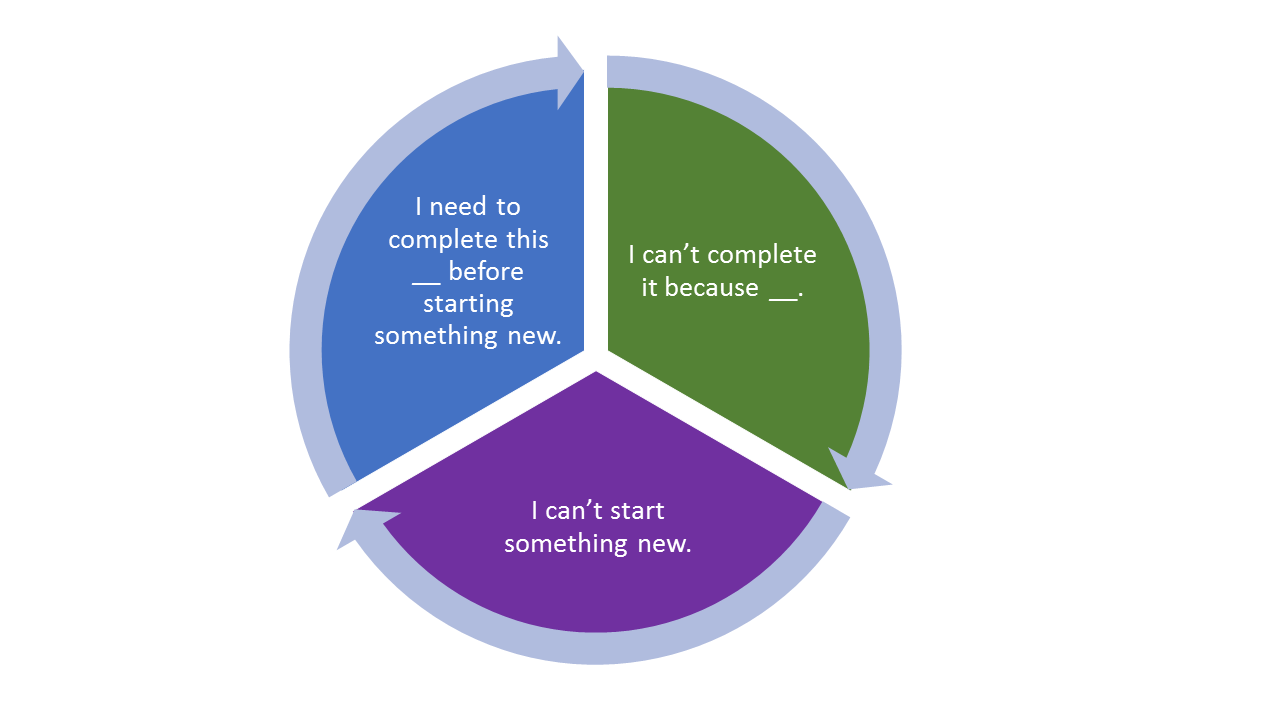Comics are more than fun! Journal articles show research potential.
Comics are cool, but can I publish this research?
Whenever we thing about trying something new in research or academic writing, the question in our minds is: will I be able to publish this? This collection of multidisciplinary open-access offers an answer: yes! These articles discuss the potential for comics or graphic narratives at multiple stages of the research process.
Abd el-Gawad, H., & Stevenson, A. (2021). Egypt’s dispersed heritage: Multi-directional storytelling through comic art. Journal of Social Archaeology, 21(1), 121–145. https://doi.org/10.1177/1469605321992929
Abstract. This paper responds to a need to address the colonial history of collections of Egyptian archaeology and to find new ways in which Egyptian audiences can assume greater agency in such a process. The ‘Egypt’s Dispersed Heritage’ project presents a model of engagement whereby foreign museum collections become the inspiration for Egyptians to express their own feelings about the removal of their heritage abroad using idioms and traditional storytelling of cultural relevance to them. A series of online comics confronting contentious heritage issues, including the display of mummified human remains, eugenics, looting and destruction, is discussed. It is argued that this approach is not only more relatable for Egyptian communities, but moreover provides space for the development of grass-roots critique of heritage practices, both in the UK and in Egypt. Museums have a responsibility to take on board these critiques, curating not just objects but relationships forged amongst them in historical and contemporary society.
Bartoszko, A. (2021). In Love With the Virus: Reducing Harms, Promoting Dignity, and Preventing Hepatitis C Through Graphic Narratives. Health Promotion Practice. https://doi.org/10.1177/15248399211041075
Abstract. This article describes a process of creating an ethnographic comic about injection drug use and hepatitis C, based on long-term ethnographic fieldwork in Norway. The project and the graphic publication titled The Virus were a collaboration between a social anthropologist, a graphic artist, and individuals who inject illegal drugs and are aimed at reducing bodily, social, and narrative harms related to drug use. The article argues that structurally informed interventions, such as this project, which account for the social, economic, and epistemological inequalities, benefit from taking phenomenological perspectives seriously. In our case, that attitude meant including participants’ positive associations with their current or former heroin and injecting drug usage, their stigmatized desires, and their emotions—such as love—related to the disease. The article describes the narrative, conceptual, aesthetic, and practical choices encountered in making The Virus to confront the dominant, authorized narratives in the field of drug use and hepatitis C. We sought to make choices that ultimately would not contribute to the (re)production of the very object of the prevention—stigma related to hepatitis C—but instead would create a new narrative(s) that forged a sense of purpose, recognition, and humanity.
Darnhofer, I. (2018). Using Comic-Style Posters for Engaging Participants and for Promoting Researcher Reflexivity. International Journal of Qualitative Methods. https://doi.org/10.1177/1609406918804716
Abstract. Visual methods, including drawn images such as comics, are receiving increasing attention in qualitative research. Indeed, comics are a highly accessible form of visual data, and through the intermingling of words and images they are well suited to convey the multidimensionality of real life. Drawing on a research project, I reflect on the potential of comic-style posters to engage participants in a workshop setting. The aim was to receive feedback on preliminary results, and the posters were very effective to fuel discussions, thus promoting social sense-making. Moreover, the process of designing the comic posters encouraged reflexivity within the research team. The work of visualizing results spurred discussions and surfaced implicit assumptions tied to methods for analyzing data and communicating results. These experiences indicate the creative potential of comic-style drawings for encouraging a more playful approach to discuss and share results of qualitative research with diverse audiences.
Emmerson, P. (2016). Doing comic geographies. Cultural Geographies, 23(4), 721–725. https://doi.org/10.1177/1474474016630967
Abstract. This article reflects on how notions of ‘the comic’ may be of added value to geographers’ research. It is formed around the idea that there are aspects of space and society that are by nature incongruous and unsuitable to be understood through frameworks of scholarship that privilege ‘reason’ and objectivity above all else. The author thus reflects on how these notions of ‘the comic’ as a mode of thought can be applied to understanding different fields of research. Ultimately, the article draws out how using this comic mode also forms an ‘inward’ reflective process which can help to understand the often complicated positions that researchers hold. This article thus calls for an inclusion of the often otherwise ignored comic aspects of the world into scholarship so that we, as geographers, may provide fuller and more human critical analyses of space, culture and society.
Khanolainen, D., & Semenova, E. (2020). School Bullying Through Graphic Vignettes: Developing a New Arts-Based Method to Study a Sensitive Topic. International Journal of Qualitative Methods. https://doi.org/10.1177/1609406920922765
Abstract. The purpose of this study was to develop a new arts-based measure assessing school bullying and to test it within a pilot study involving 19 schoolchildren (mean age = 15.4; range = 1.00). The researchers designed the new methodological tool (referred to as graphic vignettes) as a set of incomplete comic strips, which participants were asked to complete in a creative way. Researchers then invited participants to engage in follow-up interviews using completed comic strips as individualized interview prompts. The authors detail the design and administration of the graphic vignettes and discuss their efficacy, limitations, and potential applications. The researchers argue that studies on sensitive topics can benefit from a wider dissemination of this arts-based research method. They also assert that the use of creatively co-constructed interview prompts individualizes participant–researcher interactions, placing the power in the hands of participants. The article aims to inspire further development of graphic vignettes.
Kuttner, P. J., Weaver-Hightower, M. B., & Sousanis, N. (2021). Comics-based research: The affordances of comics for research across disciplines. Qualitative Research, 21(2), 195–214. https://doi.org/10.1177/1468794120918845
Abstract. Comics have long been a focus of scholarly inquiry. In recent years, this interest has taken a methodological turn, with scholars integrating comics creation into the research process itself. In this article, the authors begin to define and document this emerging, interdisciplinary field of methodological practice. They lay out key affordances that comics offers researchers across the disciplines, arguing that certain characteristics—multimodality, blending of sequential and simultaneous communication, emphasis on creator voice—afford powerful tools for inquiry. The authors finish by offering some questions and challenges for the field as it matures.
Rainford, J. (2021). Stripping back the novelty: A critical reflection on the dual use of a comic-based approach to engage participants and publics. Methodological Innovations. https://doi.org/10.1177/20597991211060681
Abstract. There has been increasing use of comic-based approaches within qualitative research as part of an increase in creative and visual methods more generally within social science research. However, whilst increasingly prevalent in dissemination, their use within data collection is less common. This paper examines the dual use of a comic-based approach embedded within a study that explored widening participation in higher education. Initially developed for the triangulation of emergent research findings with a wider group of participants, a comic panel was developed to be used as a focus of discussions within a workshop with 11 practitioners. This was then further developed for wider dissemination and to create a space for dialogue and to engage wider publics with the study’s recommendations. Both uses are critically examined, highlighting the affordances of comic-based approaches such as their capacity for supporting dissemination to a wider audience by distilling the findings and presenting them in an engaging way. Furthermore, it argues that the form can allow for creating points of ambiguity that create spaces for the audience to challenge and question taken for granted assumptions on a topic. The paper also sets out possible challenges such the need for specialist skills, the potential for oversimplification and misrepresentation of complex issues. This paper argues that with careful planning, comic-based approaches can add significant value and increase engagement with research. Finally, it offers suggestions for how this approach could be developed by future researchers.
Viljoen, J.-M., & Zolkos, M. (2021). Reimagining cultural memory of the arctic in the graphic narratives of Oqaluttuaq. Memory Studies. https://doi.org/10.1177/17506980211037283
Abstract. The Greenlandic oral story-telling tradition, Oqaluttuaq, meaning “history,” “legend,” and “narrative,” is recognized as an important entry point into Arctic collective memory. The graphic artist Nuka K. Godtfredsen and his literary and scientific collaborators have used the term as the title of graphic narratives published from 2009 to 2018, and focused on four moments or ‘snippets’ from Greenland’s history (from the periods of Saqqaq, late Dorset, Norse settlement, and European colonization). Adopting a fragmentary and episodic approach to historical narrativization, the texts frame the modern European presence in Greenland as one of multiple migrations to and settlements in the Artic, rather than its central axis. We argue that, in consequence, the Oqaluttuaq narratives not only “provincialize” the tradition of hyperborean colonial memories, but also provide a postcolonial mnemonic construction of Greenland as a place of multiple histories, plural peoples, and heterogenous temporalities. As such, the books also narrativize loss and disappearance—of people, cultures, and environments—as a distinctive melancholic strand in Greenlandic history. Informed by approaches in the field of cultural memory and in the study memorial objects, Marks’ haptic visuality and Keenan and Weizman’s forensic aesthetics, we analyze the graphic narratives of Oqaluttuaq in regard to their aesthetic dimensions, as well as investigate the role of material objects and artifacts, which work as narrative “props” for multiple stories of encounter and survival in the Arctic.










Looking back at 2023, find all posts here!
We explored stages of a research project, from concept to publication. In each quarter we focused on one part of the process. In this recap for the year you will find original guest posts, interviews, curated collections of open-access resources, recordings from webinars or roundtable discussions, and instructional resources.